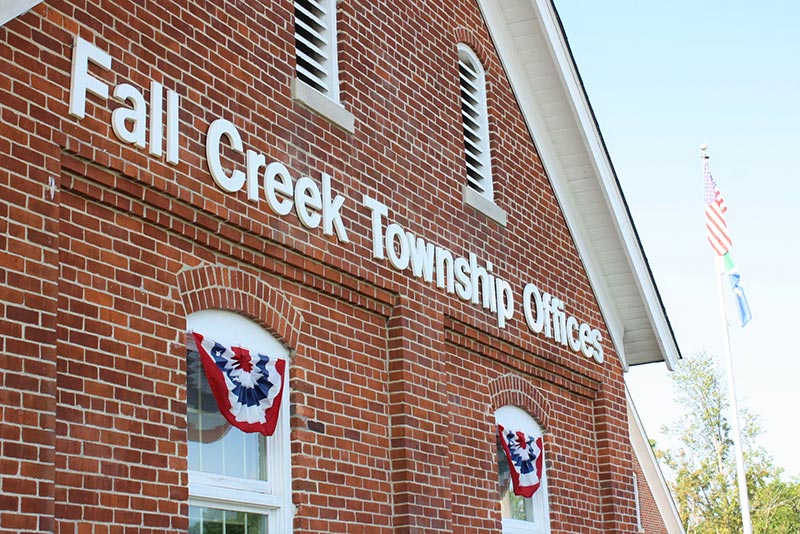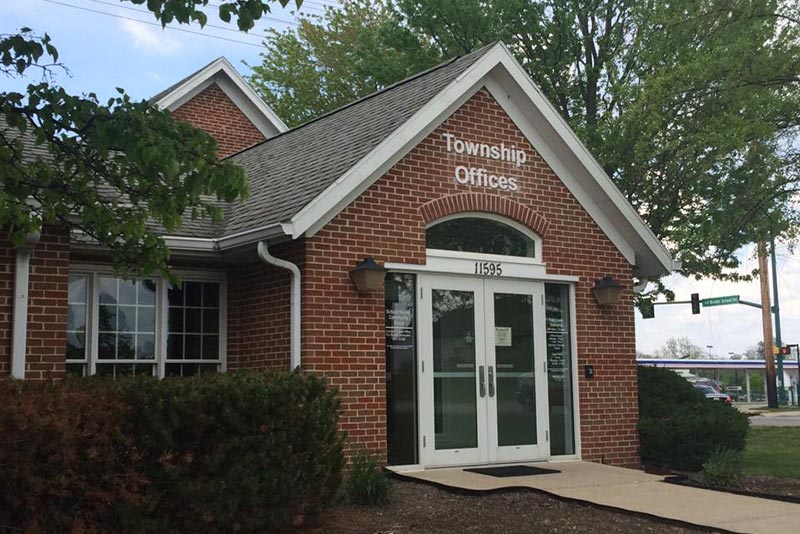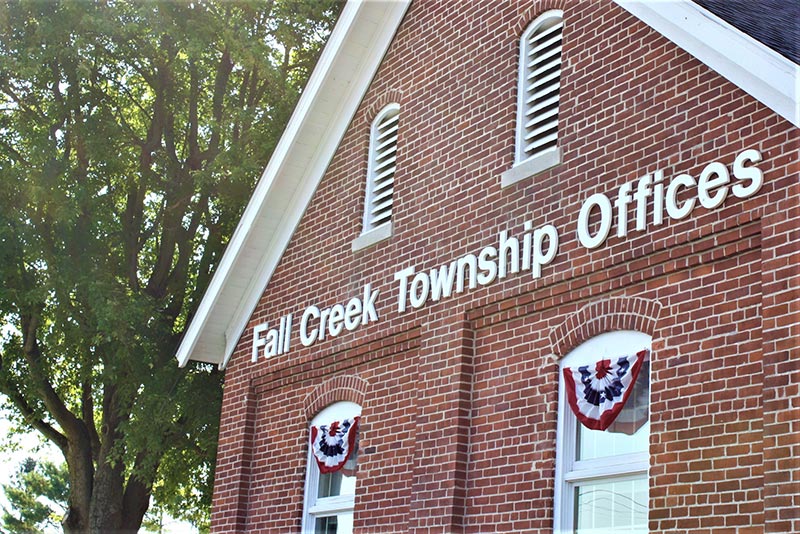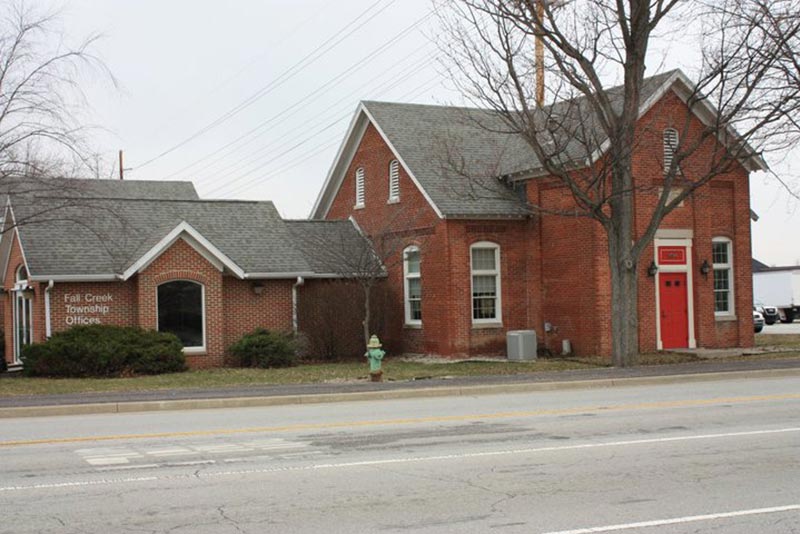Fall Creek Woods – The Trees
Indiana Native Trees
You have accessed this page through the Fall Creek Woods sign kiosk found in the park. This project was developed and paid for by the Hamilton County, Indiana Eagle Scouts, Troop 109. This project space is provided by Fall Creek Township. The scout in the attribution of this project is Amay Kulkarni.
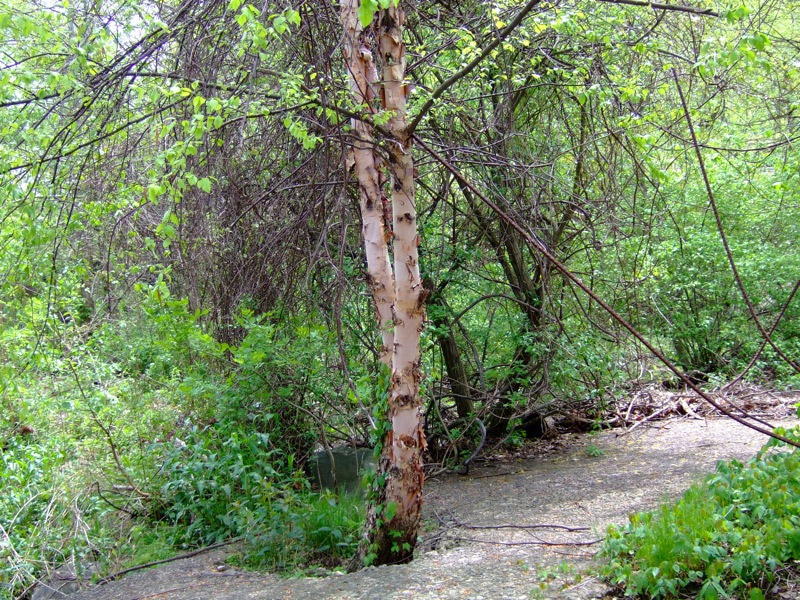
The River Birch is a deciduous tree native to Indiana and other parts of North America. It is known for its distinctive peeling bark which reveals shades of salmon, cream, and brown. The River birch is often planted for its ornamental value and ability to tolerate wet soils, making it a popular choice for landscaping and erosion control.

The American Sycamore also known as American planetree, buttonwood, and buttonball is a large deciduous tree that is native to Indiana and other parts of North America. It is characterized by its mottled bark that flakes off to reveal patches of white, gray, and green. The American Sycamore is a popular shade tree due to its large size and broad canopy, and is often planted along streets and in parks.
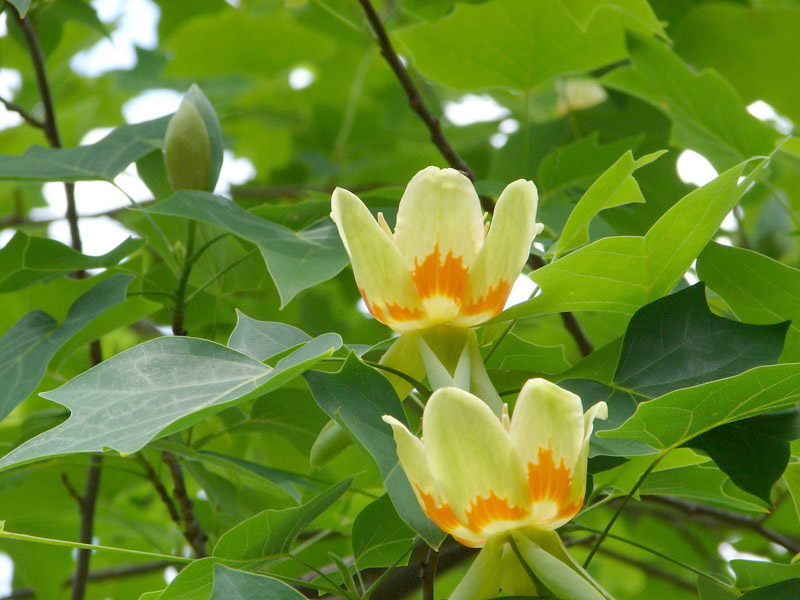
The Tulip Tree also called yellow poplar is the state tree of Indiana, and is known for its tall stature. The tree has bright green leaves that turn golden in the autumn, and the tree produces green-yellow tulip flowers. When matured, the tree can grow to more than 150 feet tall and is part of the Magnolia family. A tulip tree reaches its full stature in approximately 200 years.

The American Dogwood is a small deciduous tree or shrub known for its beautiful white or pink flowers that bloom in the spring, and its bright red berries that attract birds in the fall. The American Dogwood is an important understory tree in Indiana’s forests, providing food and shelter for wildlife, and is also a popular ornamental plant in landscaping due to its attractive flowers and colorful fall foliage.
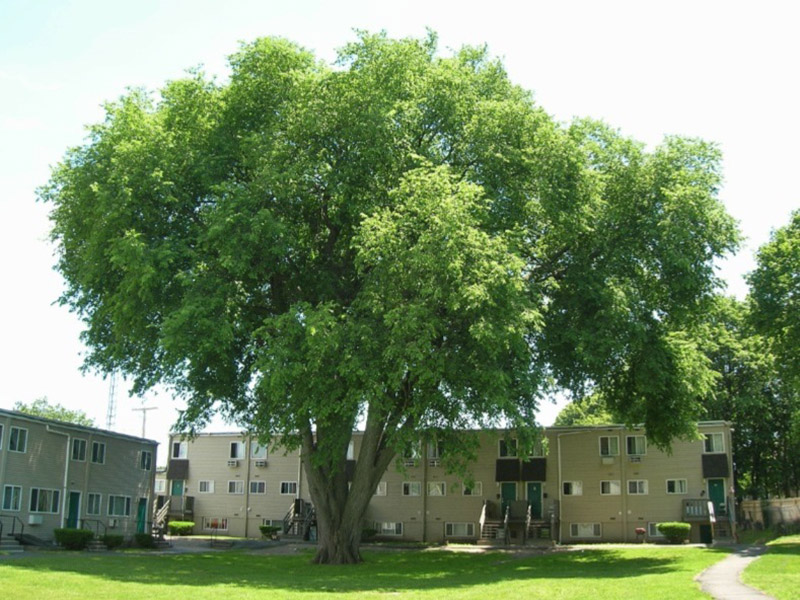
The American Elm is a large deciduous tree known for its graceful arching branches and its vase-like shape. The American Elm was once a dominant species in Indiana forests but was decimated by Dutch elm disease in the 20th century. However, efforts to breed disease-resistant varieties are ongoing, and the tree is still highly valued for its aesthetic and ecological importance. The tree provided shelter in 1816 for the forty-three delegates during the drafting of the state’s constitution.
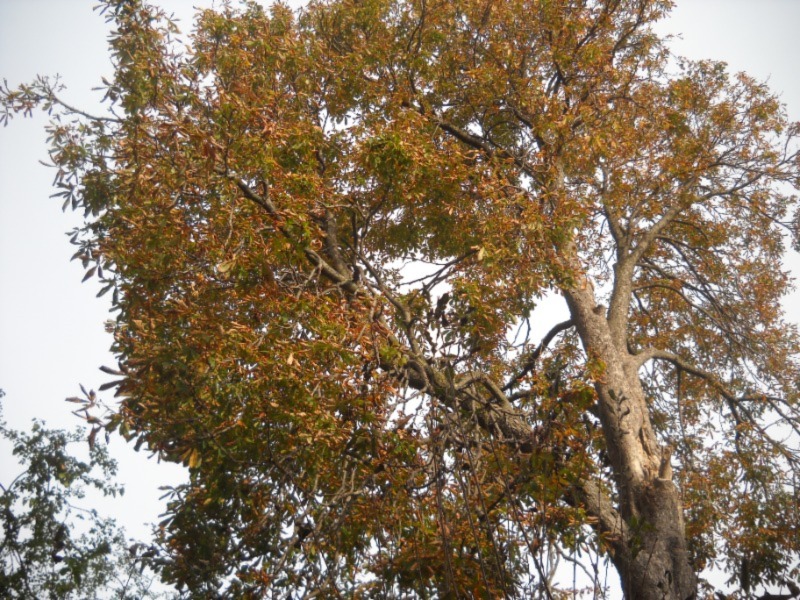
The Buckeye Tree is a small deciduous tree known for its distinctive palmate leaves and its large, shiny brown seeds that resemble chestnuts. The Buckeye Tree is an important component of Indiana’s forests, providing food and shelter for wildlife, and is also a popular ornamental tree in landscaping due to its attractive foliage and showy flowers. However, it is important to note that the Buckeye’s seeds are toxic to humans and livestock, and should not be eaten.
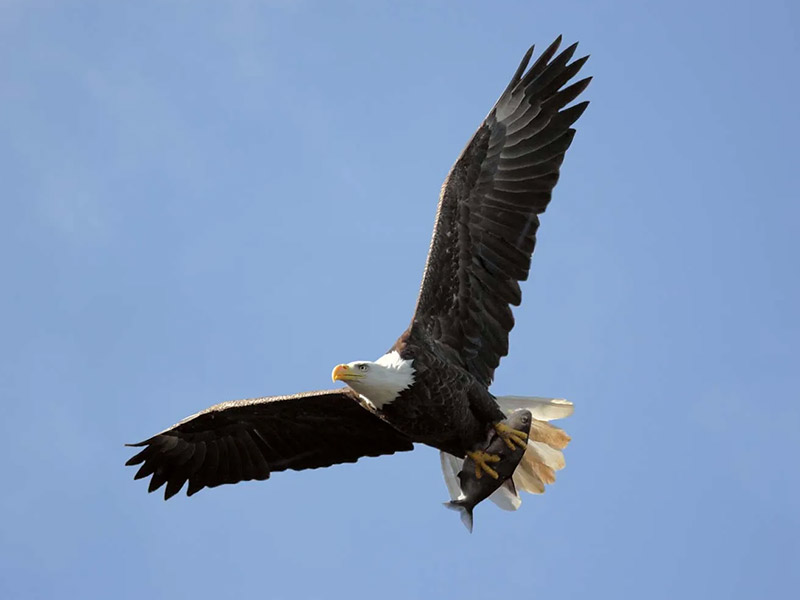
The Bald Eagle is a large bird of prey that is known for its distinctive white head and a brown body. The Bald Eagle is not only an important predator in Indiana’s ecosystem, but it is also a symbol of national pride and freedom. These majestic birds can be seen soaring over lakes and rivers in search of fish to eat.
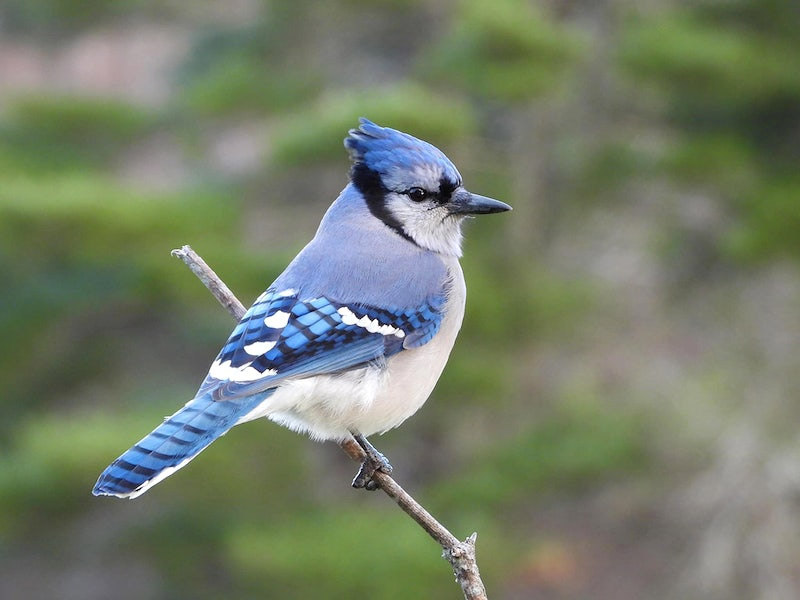
The Blue Jay (male depicted) is a species of bird that is known for its bright blue feathers and distinctive crested head. Blue Jays are known for their intelligence and social behavior, often forming flocks and communicating with a variety of calls and songs. They are also notorious for their habit of stealing food from other birds’ nests.
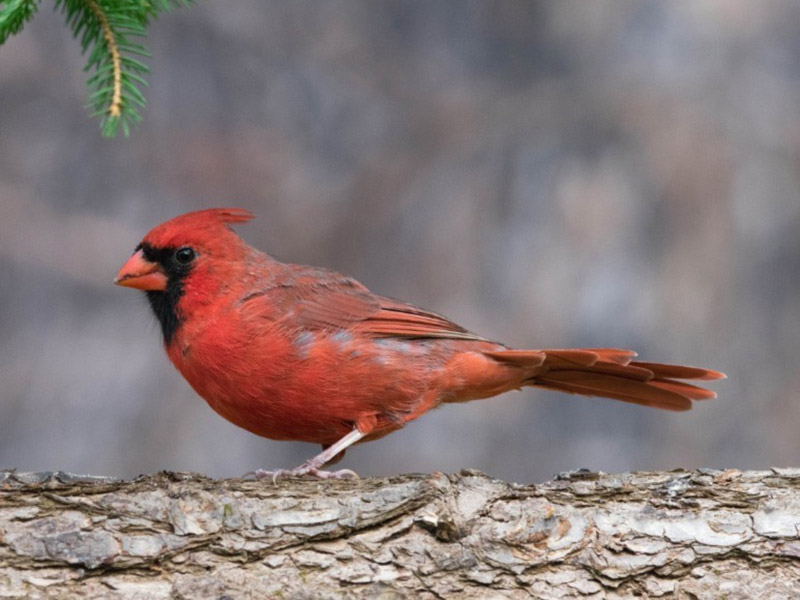
The Cardinal also called redbird (male depicted) is a species of bird that is known for its bright red feathers and distinctive crested head. Cardinals are also known for their distinctive songs, which are often used to mark territory and attract mates. Cardinals are especially important in Indiana, as they are the state bird.
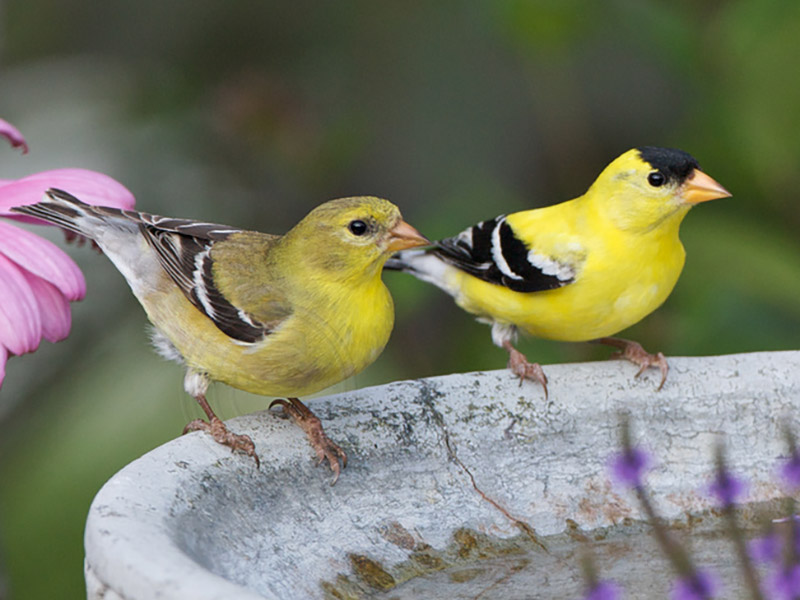
The American Goldfinch is a species of bird that is known for its bright yellow feathers and black wings. American Goldfinches are unique among North American birds in that they undergo a complete molt each year, during which their feathers change from a bright yellow color to a drab brown. They’re most abundant in areas with thistle plants, and near feeders.
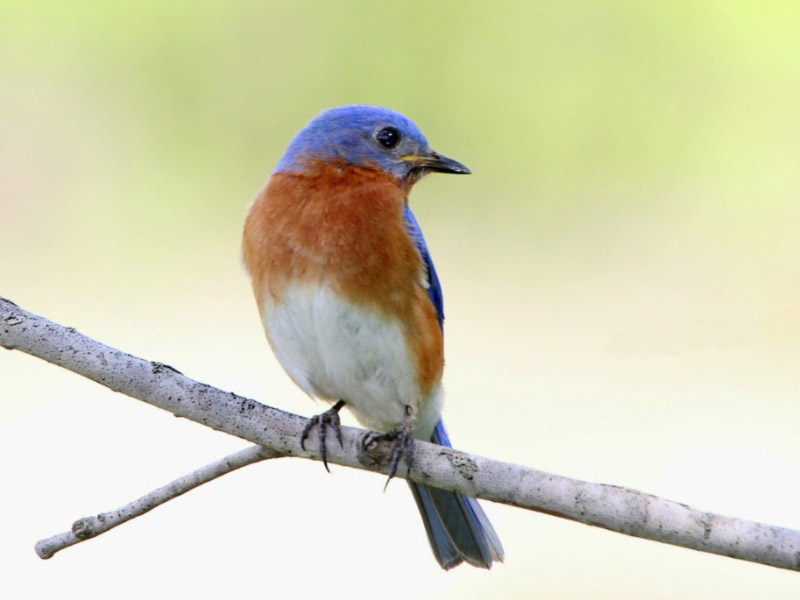
The Eastern Bluebird (male depicted) is a species of bird that is known for its bright blue feathers and rust-colored breast. Eastern Bluebirds are cavity-nesting birds, meaning they rely on tree cavities or nest boxes for nesting. They are important predators of insects and small mammals, and are often used as a symbol of happiness and good luck.
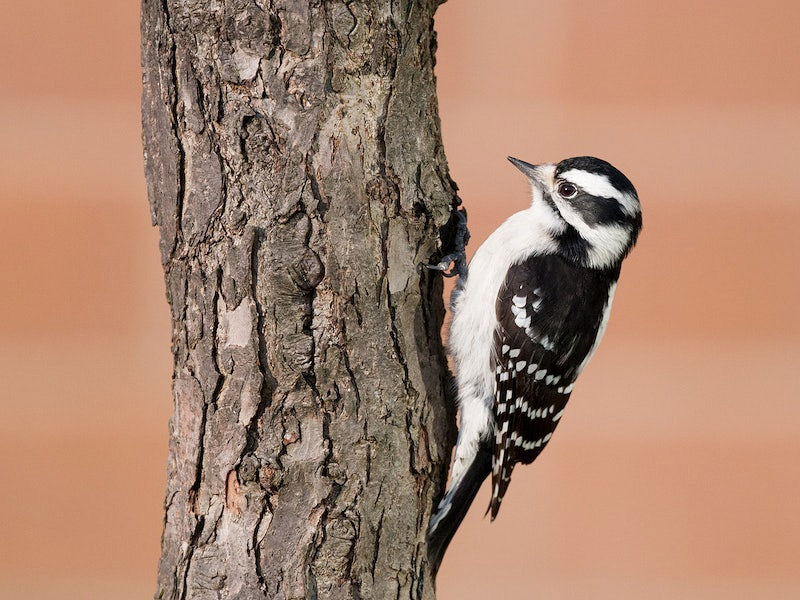
The Downy Woodpecker (female depicted) is a species of bird that is known for its distinctive black and white feathers and small size. Downy Woodpeckers are the smallest woodpecker species in North America, and are known for their drumming behavior, which they use to communicate with other birds. They also have a unique tongue structure, which allows them to extract insects from deep crevices in tree bark.
Fall Creek Township Offices
11595 Brooks School Road
Fishers, Indiana 46037
Phone Numbers
Office Phone: (317) 841-3180
Fax: (317) 841-3191
Office Hours
Mon – Fri: 9 AM – 4 PM
Pantry: Tue – Thurs: 10 AM – 2 PM
Closed National Holidays
Non-Emergency Fire Department:
(317) 846-2525
Non-Emergency Medical Services:
(317) 846-2525
Sheriff’s Office:
(317) 595-3300

